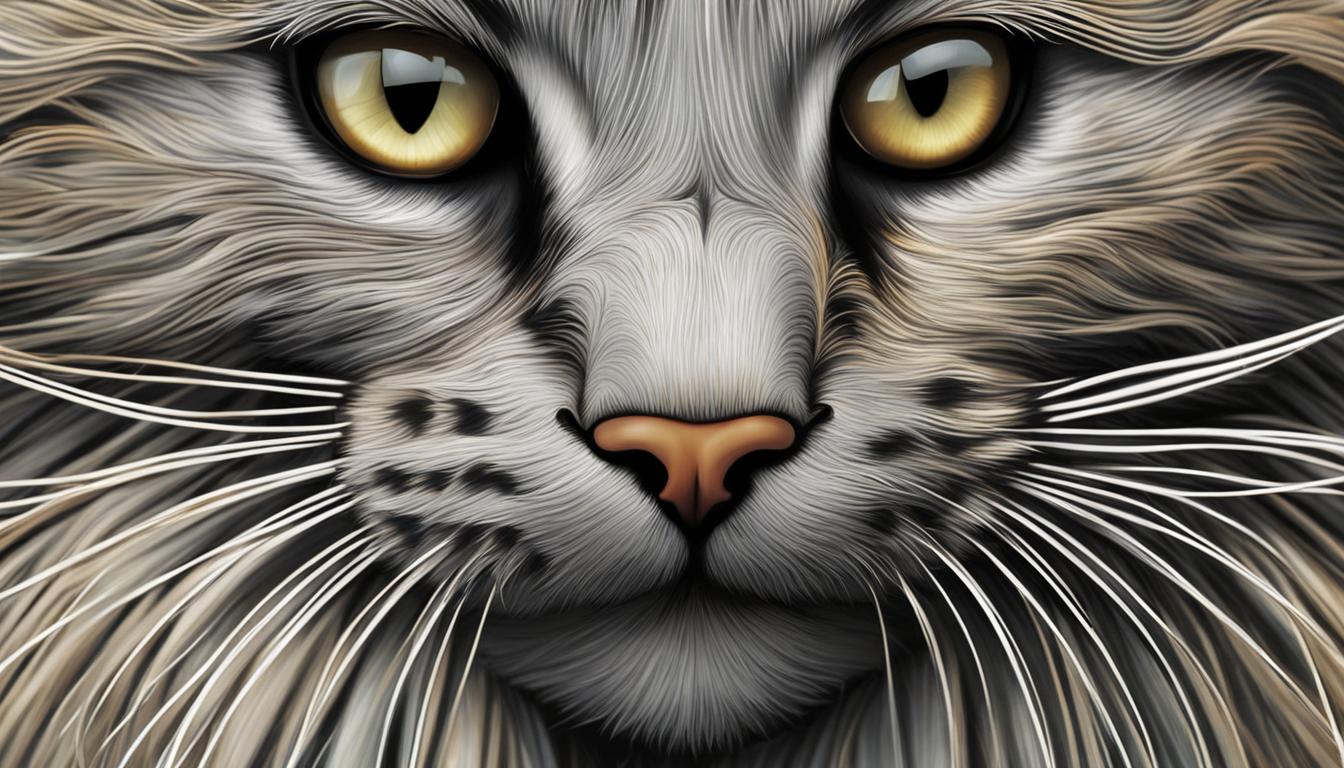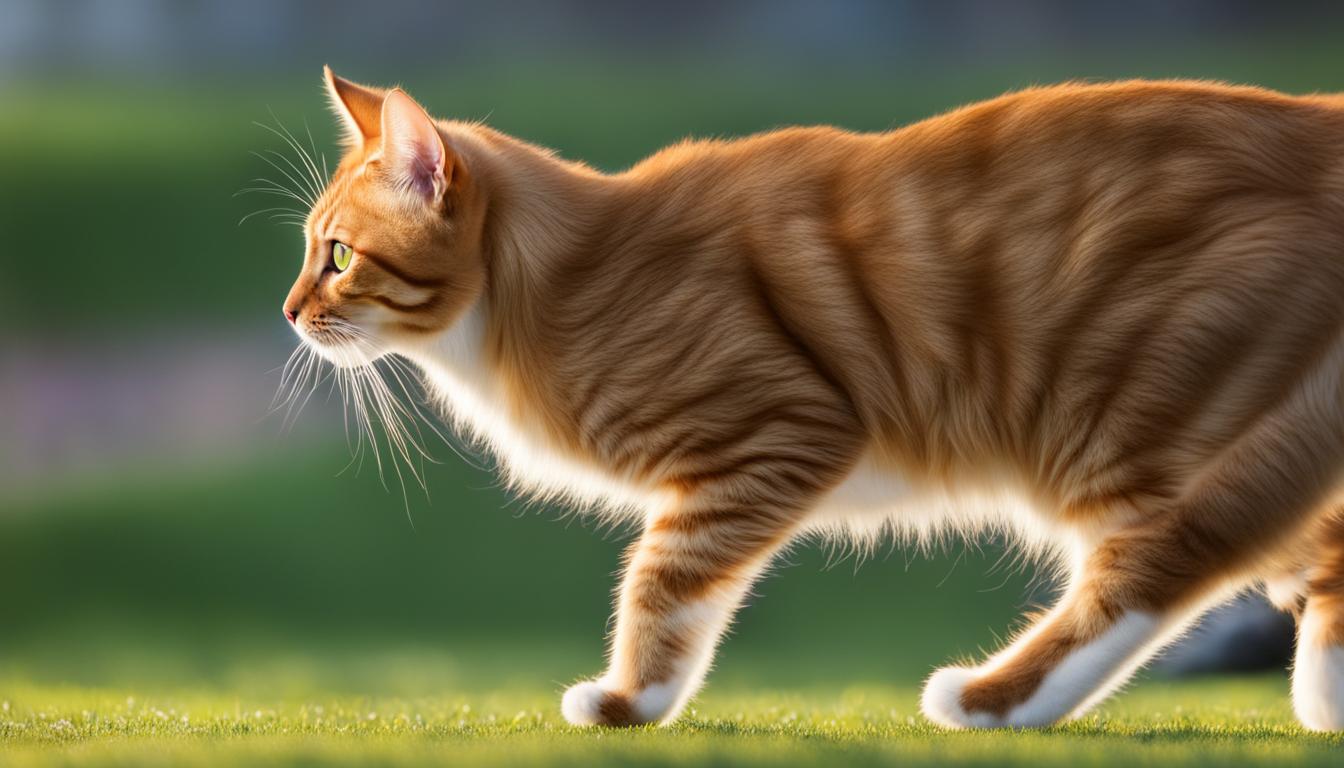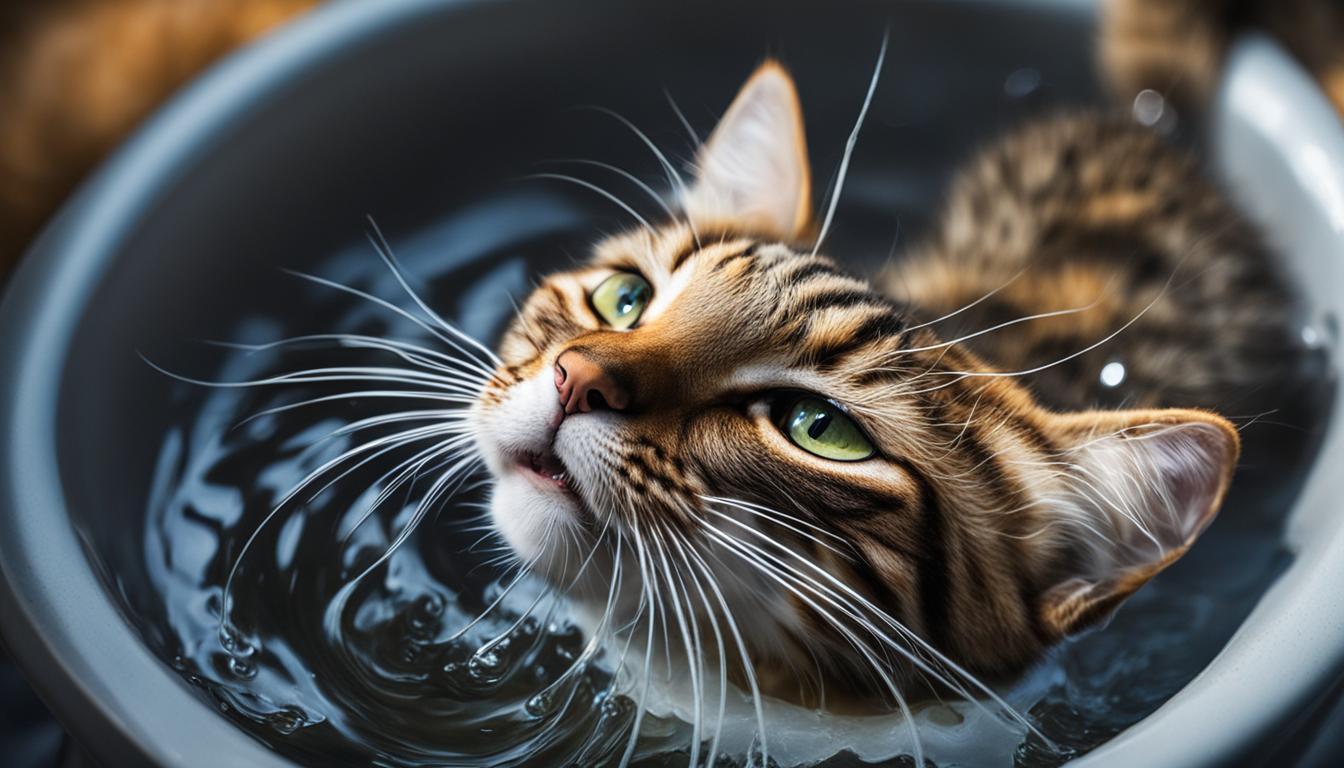I’ve always been fascinated by cats and their incredible abilities. From their graceful leaps to their mysterious intelligence, they never cease to amaze me. One aspect of a cat’s life that often goes unnoticed is their whiskers. We often see them as mere adornments on their face, but in reality, they play a vital role in a cat’s spatial awareness and navigation.
Cat whiskers, also known as vibrissae, are not just ordinary hairs. They are thicker, stiffer, and deeply rooted in the skin. They have a complex network of nerves and blood vessels, making them highly sensitive and capable of detecting even the slightest vibrations and movements in their environment.
Whisker fatigue is a condition that can occur when a cat’s whiskers are constantly stimulated. Imagine the discomfort of having your whiskers constantly rubbed against the sides of a narrow food bowl! This can not only cause discomfort but also impact a cat’s ability to navigate its surroundings effectively.
Key Takeaways:
- Whiskers are specialized hairs that provide cats with spatial awareness.
- Whisker fatigue can occur when a cat’s whiskers are constantly stimulated, causing discomfort and impacting their navigation abilities.
- Using wider, shallow food bowls can help prevent whisker fatigue.
- Providing a quiet and comfortable resting space for your cat can also help prevent whisker fatigue.
- Whisker health is essential for a cat’s overall well-being and navigation.
The Anatomy and Function of Cat Whiskers
Cat whiskers, also known as vibrissae, are fascinating structures that play a crucial role in a cat’s daily life. These specialized hairs are not just ordinary fur; they have a unique anatomy and serve specific functions that help cats navigate their surroundings with precision and confidence.
The Different Types of Whiskers
There are different types of whiskers on a cat’s face, each serving a specific function. The most well-known type is the mystacial whisker, which are the long, thick whiskers located on each side of a cat’s upper lip. These mystacial whiskers help cats determine the size, shape, and texture of objects in their environment, allowing them to gauge if they can fit through tight spaces or if something is potentially dangerous.
Other types of whiskers, such as genal and mandibular whiskers, are located on the cheeks and chin, respectively. These whiskers help cats detect movement and direction, enhancing their hunting abilities and overall spatial awareness.
The Structure and Growth of Whiskers
Whiskers are made of keratin, the same material that makes up our hair and nails. However, their structure is unique and complex, consisting of three layers: the outer, middle, and inner layers. This specialized structure allows whiskers to be sturdy and flexible at the same time, making them highly sensitive to even the slightest changes in the environment.
Whiskers naturally shed and regrow over time, taking up to three months to fully grow back. This continuous cycle ensures that cats always have fully functional whiskers to aid them in their daily activities.
| Whisker Type | Location | Main Function |
|---|---|---|
| Mystacial Whiskers | Upper Lip | Determine size, shape, and texture of objects |
| Genal Whiskers | Cheeks | Detect movement and direction |
| Mandibular Whiskers | Chin | Enhance hunting abilities and spatial awareness |
Appreciating the Functionality of Whiskers
Cat whiskers are not just a decorative feature; they serve a vital purpose in a cat’s life. Whiskers help cats navigate their environment, allowing them to move with precision and avoid potential obstacles. They also assist in hunting, giving cats an advantage as they detect the subtlest movements of their prey.
Understanding the anatomy and function of cat whiskers can help us appreciate the incredible sensory capabilities of our feline friends. Next time you see a cat gracefully maneuvering through tight spaces or stalking its prey, take a moment to admire the remarkable tool that is their whiskers.
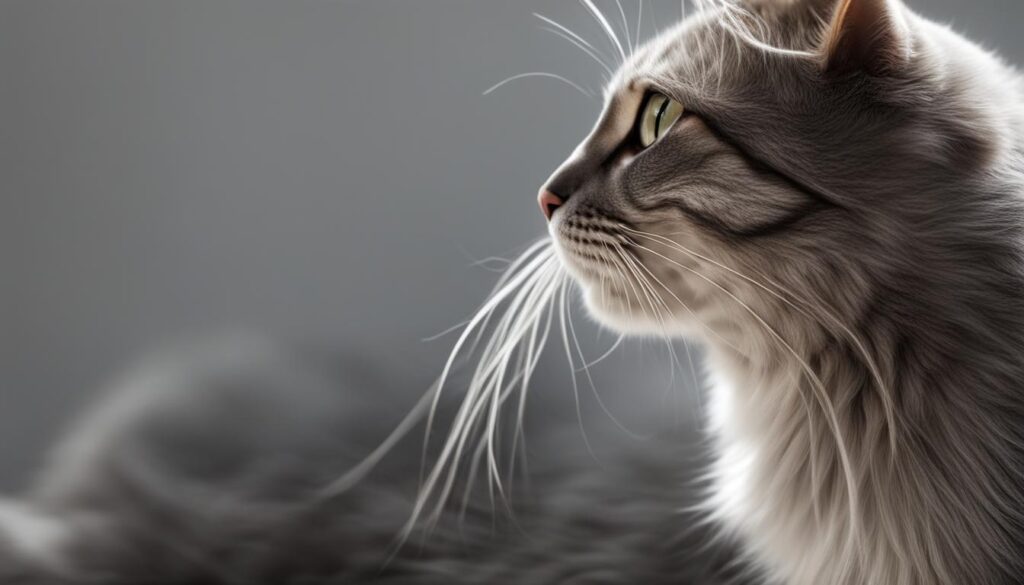
The Sensitivity and Purpose of Whiskers in Cats
When it comes to whiskers, cats have an incredible sense of sensitivity. These specialized hairs are not just for show, but serve a vital purpose in a cat’s life. Each whisker is connected to a network of nerves, allowing cats to detect even the smallest movements and vibrations in their environment. The sensitivity of whiskers enables cats to navigate their surroundings with precision and accuracy.
But what is the purpose of these sensitive whiskers? Cats use their whiskers to gather information about their surroundings, helping them determine the size, shape, and texture of objects. The whiskers act as an extension of a cat’s sense of touch, providing crucial spatial awareness. This allows them to avoid obstacles, judge distances, and even hunt for prey.
“Whiskers are like tiny antennae, providing cats with a wealth of information about the world around them,” explains Dr. Emily Johnson, a feline behavior specialist. “They rely on their whiskers to navigate through tight spaces, such as narrow walkways or entrances.”
Whiskers also play a role in communication and social interaction among cats. These remarkable sensory organs can be used to convey a cat’s emotions and intentions to other felines. For example, when two cats touch their whiskers together, it is a form of greeting and allows them to exchange information about their mood and intentions.
The sensitivity and purpose of whiskers in cats highlight the importance of maintaining their health and well-being. It is crucial to provide a cat with an environment that allows their whiskers to function optimally. This includes using whisker-friendly food and water dishes that are wide and shallow, providing plenty of space for their whiskers to remain unstimulated. By understanding and respecting the sensitivity and purpose of their whiskers, we can help our feline friends navigate their world with ease.
| Whisker Sensitivity | Purpose of Whiskers in Cats |
|---|---|
| Connected to a network of nerves | Detecting movements and vibrations in the environment |
| Determine the size, shape, and texture of objects | Providing spatial awareness and navigation |
| Used for communication and social interaction | Conveying emotions and intentions to other cats |
| Require a whisker-friendly environment | Wide and shallow food and water dishes |
Whisker Maintenance and Health
Proper maintenance of a cat’s whiskers is essential for their overall health and well-being. Whiskers naturally shed and regrow over time, and it is important to allow this process to happen naturally without any interference. Trimming or cutting a cat’s whiskers can disrupt their sensory abilities and cause discomfort. It is best to leave the whiskers untouched and allow them to grow to their full length.
In some cases, cats may experience whisker disorders, such as ingrown hairs or folliculitis. These conditions can be painful and may require proper treatment. If you notice any abnormalities in your cat’s whiskers, such as redness, swelling, or signs of infection, it is important to seek veterinary care. A veterinarian can diagnose the issue and provide appropriate treatment, which may include medication, grooming, or even surgery if necessary.
To maintain your cat’s whiskers in good health, regular grooming is important. Brushing your cat’s fur helps to remove dirt, debris, and loose hairs that can get entangled in their whiskers. It also stimulates blood flow to the hair follicles, promoting healthy whisker growth. Additionally, providing a balanced and nutritious diet is crucial for the overall health of your cat, including their whiskers. A well-balanced diet helps to maintain the strength and vitality of the whiskers, ensuring they function optimally.
| Whisker Maintenance Tips |
|---|
| 1. Avoid trimming or cutting your cat’s whiskers |
| 2. Regularly brush your cat’s fur to remove debris and stimulate blood flow |
| 3. Provide a balanced and nutritious diet for healthy whisker growth |
| 4. Seek veterinary care if you notice any abnormalities in your cat’s whiskers |
“Maintaining the health of your cat’s whiskers is crucial for their overall well-being. Avoid cutting or trimming their whiskers and provide regular grooming to keep them clean and free from debris. A balanced diet and veterinary care are also important factors in ensuring healthy whiskers.”
The Role of Whiskers in Cat Communication
Whiskers are not just a practical feature; they also play a significant role in feline communication. Cats use their whiskers to convey various messages and express their emotions. By observing the movements and positioning of their whiskers, we can gain valuable insights into a cat’s mood and intentions.
Whisker Signals
Whisker signals are a form of nonverbal communication among cats. When two felines meet, they may touch their whiskers together as a way of exchanging information. This behavior, known as whisker greeting, helps establish trust and determine each other’s mood. The whiskers serve as an invisible language, allowing cats to communicate and understand each other on a deeper level.
“Whiskers are like a secret code between cats, conveying messages without making a sound. It’s fascinating how they can communicate through a simple touch of their whiskers.”
Communication and Social Interaction
Whiskers also play a crucial role in social interaction among cats. Just like we use facial expressions to communicate, cats rely on their whiskers to express themselves. Whisker movements can indicate a range of emotions, including happiness, curiosity, or even aggression. By interpreting these subtle cues, cats can navigate their social interactions and establish boundaries.
Understanding the role of whiskers in cat communication can deepen our connection with these enigmatic creatures. It allows us to appreciate the intricacies of their nonverbal language and better respond to their needs and desires. So next time you observe a cat’s whiskers in action, remember that they are not just simple hairs, but a powerful tool for communication.

Whisker-Related Health Issues and Care
Whisker fatigue is a condition that can significantly impact a cat’s well-being. It occurs when a cat’s whiskers are continuously stimulated, causing discomfort and stress. The causes of whisker fatigue can range from narrow food bowls that force the whiskers to bend to environmental factors such as crowded or confined spaces that constantly brush against the whiskers. It’s important to understand the symptoms and effects of whisker fatigue to ensure the overall health of our feline friends.
Cats experiencing whisker fatigue may exhibit symptoms such as reluctance to eat or drink from deep or narrow food bowls, dropping food from their mouths, or avoiding tight spaces. The constant stimulation of the whiskers can be overwhelming for cats, leading to stress and anxiety. These symptoms highlight the importance of providing proper whisker-friendly feeding dishes that are wider and shallower, allowing the cat to comfortably access their food and water without unnecessary whisker contact.
Whisker fatigue can impact a cat’s ability to navigate and can cause discomfort and stress.
It’s worth noting that whiskers are not just external features but are connected to a cat’s nervous system, specifically their brain. Whisker health is crucial for the overall well-being of a cat’s brain and nervous system. By providing an environment that caters to their unique sensory needs, we can promote a healthy and stress-free life for our feline companions. Whisker-friendly food bowls are an essential part of this care, as they prevent the unnecessary stimulation of the whiskers and contribute to a calmer and more comfortable eating experience for cats.
To summarize, whisker fatigue and stress can significantly impact a cat’s quality of life. Understanding the causes, symptoms, and effects of whisker fatigue is essential for providing appropriate care and ensuring the overall well-being of our furry friends. By using wider, shallow food bowls and creating a calm and comfortable environment, we can help prevent whisker fatigue and maintain the health of a cat’s brain and nervous system.
| Causes of Whisker Fatigue | Symptoms and Effects |
|---|---|
| Narrow food bowls | Reluctance to eat or drink |
| Crowded or confined spaces | Dropping food from the mouth |
| Constant brushing against whiskers | Avoidance of tight spaces |
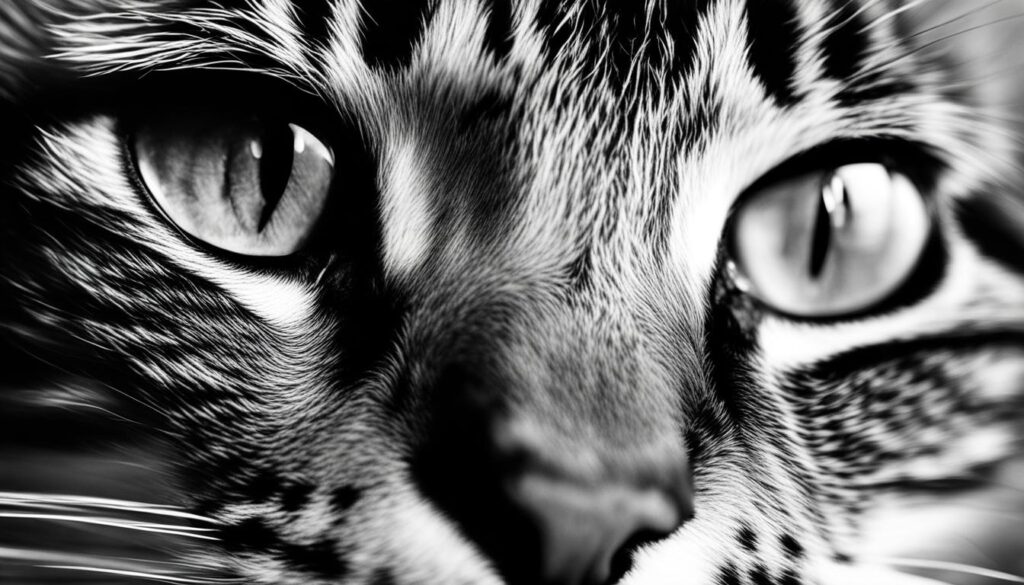
Conclusion
As I explored the fascinating world of cat whiskers, it became clear just how important they are for a cat’s spatial awareness. These specialized hairs are not only cute adornments on a cat’s face, but they serve a crucial function in helping cats navigate their surroundings with ease.
Whisker fatigue, a condition that can occur when a cat’s whiskers are constantly stimulated, can have a significant impact on their ability to move and explore. By providing wider and shallower food dishes, we can prevent discomfort and ensure that our feline friends can eat in peace.
Whisker health should not be taken lightly. Just like any other part of a cat’s body, their whiskers require care and attention. By allowing natural shedding and regrowth, regular grooming, and providing an environment that minimizes whisker fatigue, we can support the overall well-being of our furry companions.
So, let’s appreciate those mesmerizing whiskers on our cats’ faces for more than just their aesthetic appeal. Let’s acknowledge their role in spatial awareness, their importance for communication, and their impact on a cat’s overall health. By understanding and valuing these incredible sensory tools, we can create a world where our cats can thrive and explore to their heart’s content.
FAQ
What are whiskers?
Whiskers, also known as vibrissae, are specialized hairs that are thicker and stiffer than regular fur. They are deeply rooted in the skin and have a network of nerves and blood vessels.
What is the function of whiskers in cats?
Whiskers help cats detect vibrations and movements in their environment, providing them with spatial awareness and helping them navigate their surroundings.
What is whisker fatigue?
Whisker fatigue occurs when a cat’s whiskers are constantly stimulated, causing discomfort and potentially impacting their ability to navigate their surroundings.
How can I prevent whisker fatigue?
Whisker fatigue can be prevented by using wider, shallow food bowls and providing a quiet and comfortable space for the cat to rest.
How many types of whiskers do cats have?
Cats have different types of whiskers on their face, including mystacial whiskers, genal whiskers, and mandibular whiskers, each serving a specific function.
How sensitive are cat whiskers?
Cat whiskers are highly sensitive and connected to a network of nerves, allowing cats to detect even the slightest movements and vibrations in their environment.
How often do cat whiskers shed and regrow?
Cat whiskers naturally shed and regrow over time, taking up to three months to fully grow back.
How do whiskers help with communication?
Whiskers can be used by cats to signal their emotions, such as aggression or affection, and can also be used for social interaction between cats.
What are the symptoms of whisker fatigue?
Symptoms of whisker fatigue include reluctance to eat, dropping food from the mouth, and avoidance of tight spaces.
Can whisker fatigue impact a cat’s overall well-being?
Yes, whisker fatigue can cause discomfort and stress, and it is important to provide appropriate food and water dishes to prevent it and support a healthy brain and nervous system in cats.

